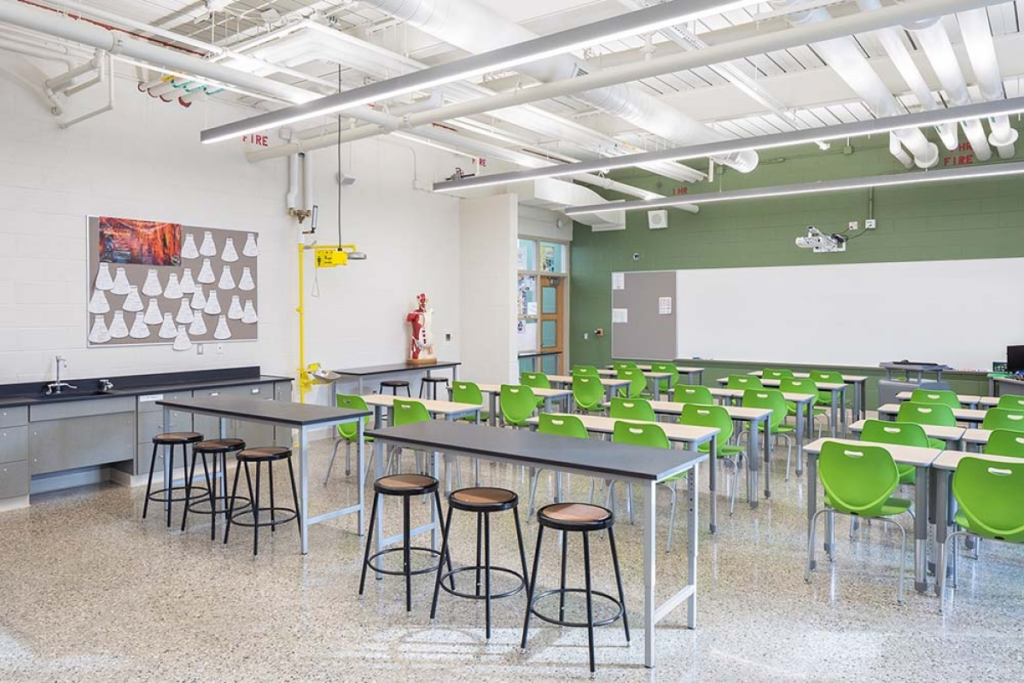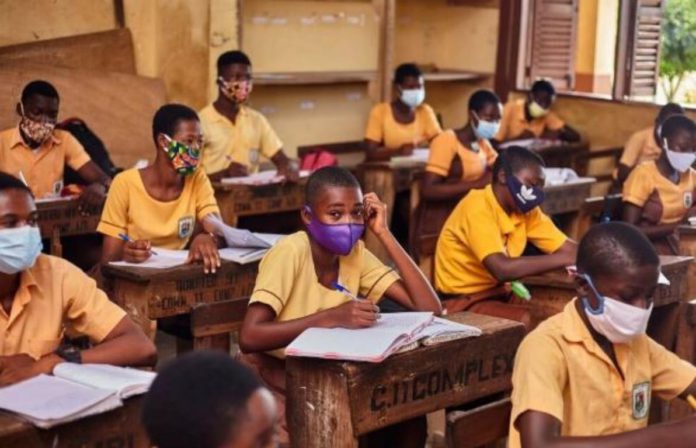The average classroom in a public school in Ghana is everything but spacious and children can barely stretch their arms either way without hitting their colleagues. This affects effective playful classroom activities.
The situation has nothing to do with the non-availability of lands in the country, but rather the lack of proper, effective, and efficient planning of good learning spaces that support the holistic education and development of the Ghanaian child.
Aside from the challenge with the learning space, Ghanaian classrooms are poorly lit, and this makes it difficult for learners to concentrate on classroom activities.

The situation has not improved five years after Ghana boldly announced its commitment to playful pedagogy through the re-engineering of its basic curriculum coupled with other reforms. Public schools in the country, surprisingly, are still not play-based learning friendly.
Play-based learning requires a well-arranged environment that prioritises children’s development while facilitating effective classroom management. The physical school environment should promote growth and development through activities and materials in defined play areas.
Researchers Mariaana Kangas and Heli Ruokamo have noted that “learning in a playful learning environment (PLE) takes the form of content creation and engagement in physical games and play.” They defined the term playful learning environment(s) to mean “an innovative, technology-enriched play and learning environment whose components are located indoors as well as outdoors.”

If you are a Ghanaian, ask yourself these basic questions: (1) do all Ghanaian children of school-going age have access to a place at school? (2) Do our school buildings, particularly the classrooms provide a safe and healthy environment for children to engage in playful classroom activities? (3) Are the learning spaces in our public schools designed for effective classroom activities? and lastly, (4) Does the school design facilitate pedagogy and effective classroom engagement?
The Sustainable Development Goals (SDGs) defined by the United Nations require countries to “build and upgrade education facilities that are child, disability, and gender-sensitive, and provide safe, non-violent, inclusive, and effective learning environments for all.”
There is a correlation between a learning environment and a child’s academic performance. Recent studies have shown that learners’ performance is enhanced in schools with better physical learning environments.
A report published by the World Bank in 2019 titled ‘The Impact of School Infrastructure on Learning – A Synthesis of the Evidence’ showed that, “there is a growing number of non-experimental studies that indicate that investments in quality school infrastructure are strongly associated with improved learning outcomes.”
According to researchers, the preferred school infrastructure should have; (a) good “natural” conditions such as lighting, air quality, temperature control, acoustics, and links to nature, (b) age-appropriate learning spaces that offer flexible learning opportunities that pupils can adapt and personalize, and (c) connections between learning spaces that are easy to navigate and that may provide additional learning opportunities.
The other considerations are (d) schools should be designed from the inside out (classroom to school) so that each space meets the needs of its inhabitants, (e) provision for a level of ambient stimulation using colour and visual complexity, and finally, (f) the designs should consider local climatic and cultural conditions.
Touching on the importance of a good learning environment, The LEGO Foundation explained in a White Paper published in 2012 that, “when children learn through play in stimulating environments with quality facilitation, there is a greater opportunity to support them, taking account of their individual backgrounds and needs.”
Ghana has made some progress in improving its education system through curriculum re-engineering and other reforms. However, the author believes the time is ripe for the Ghanaian government to focus its attention on quality primary education. This will require the government to invest in educational infrastructure that supports playful learning.
Here are some suggested steps to be taken by the Ghanaian government to invest in quality school infrastructure that will promote the holistic development of learners.
First, the government must increase its budgetary allocation to the education sector in the coming years if it wants to greatly impact the learning outcome of Ghanaian children. Available data shows the country’s spending on education has been on the decline since 2015, when the government’s expenditure on education was 23.81% of the total government expenditure. Since then, the figure has been dropping from 22.09% in 2016 to 20.10% in 2017 and from 18.60% in 2018 to the present 12% earmarked for the sector in the 2023 Budget Statement.
It is worth noting that out of the sum of GHS205 billion expected to be spent by the government in 2023, only GHS24.7 billion, representing 12% of the total budget, was allocated to the education sector. Of the GHS24.7 billion, a total of GHS1.8 billion was allocated to the Ghana Education Trust Fund (GETFund) with GHS2.7 billion allocated for Capital Expenditure (CAPEX) which would be used to finance educational infrastructure across the country. This is simply not enough to create a befitting learning environment for Ghanaian children.
Second, there is an urgent need for the government to upgrade existing basic school infrastructure while taking steps to address the situation of children learning under trees. Currently, there are over 5,400 basic schools across the country still under trees and about 4,000 public primary schools without junior high schools, a study has revealed.
The Minister of Education, Dr Yaw Osei Adutwum recently announced steps being taken by the government to construct modernised junior high schools throughout the country. The new school complex, according to him, will be fitted with a science laboratory, computer lab, and robotics laboratory and it will be able to accommodate over 1,000 schoolchildren from various communities.
While this is commendable, the government has to direct its attention to the basic schools where the molding and shaping of the character of Ghanaian children start.
The present author acknowledges that this cannot be done overnight, especially considering the economic misfortune of the country within the last two years. However, there is an urgent need to start somewhere if we want to get this job properly done.
Third, it is suggested that since the field of educational facilities infrastructure draws on many disciplines, including architectural design, ergonomics, education policy, and pedagogy, the government should endeavour to form an interdisciplinary review team to inspect our existing school infrastructure with the objective of recommending steps to be taken to upgrade them and make them child and play-based learning friendly.
The team should consist of engineers, school design practitioners with wide international experience, academic researchers specialising in the impact of school infrastructure on learning, teachers, parents, and children.
Ghana needs to strive to improve its education system by ensuring that Ghanaian children have unimpeded access to school where they acquire the knowledge and skills, they require to lead healthy and productive lives.
This can only happen when the government invests more in quality school infrastructure that supports play-based learning across the country.
A. Kwabena Brakopowers, is a development communications consultant, journalist, and author whose works focus on education, development communication, law and migration, politics, and international relations. He can be reached at Brakomen@outlook.com

